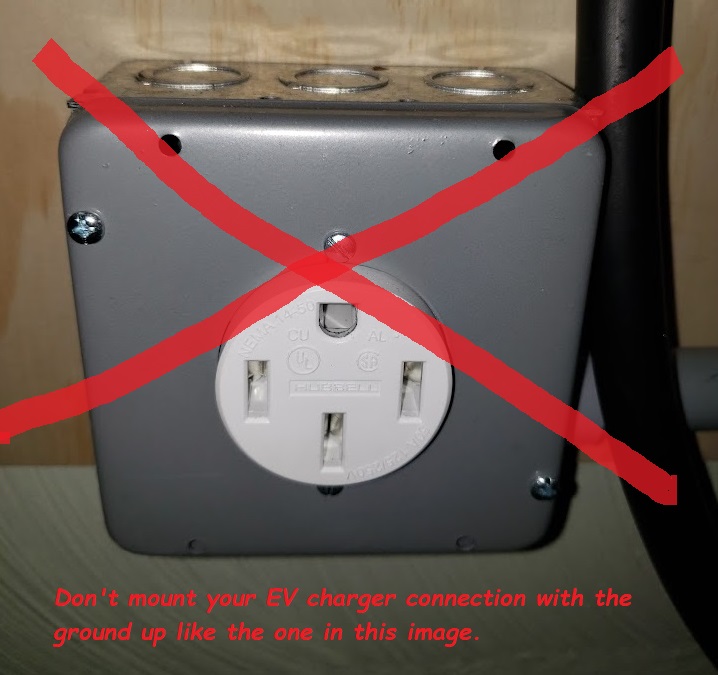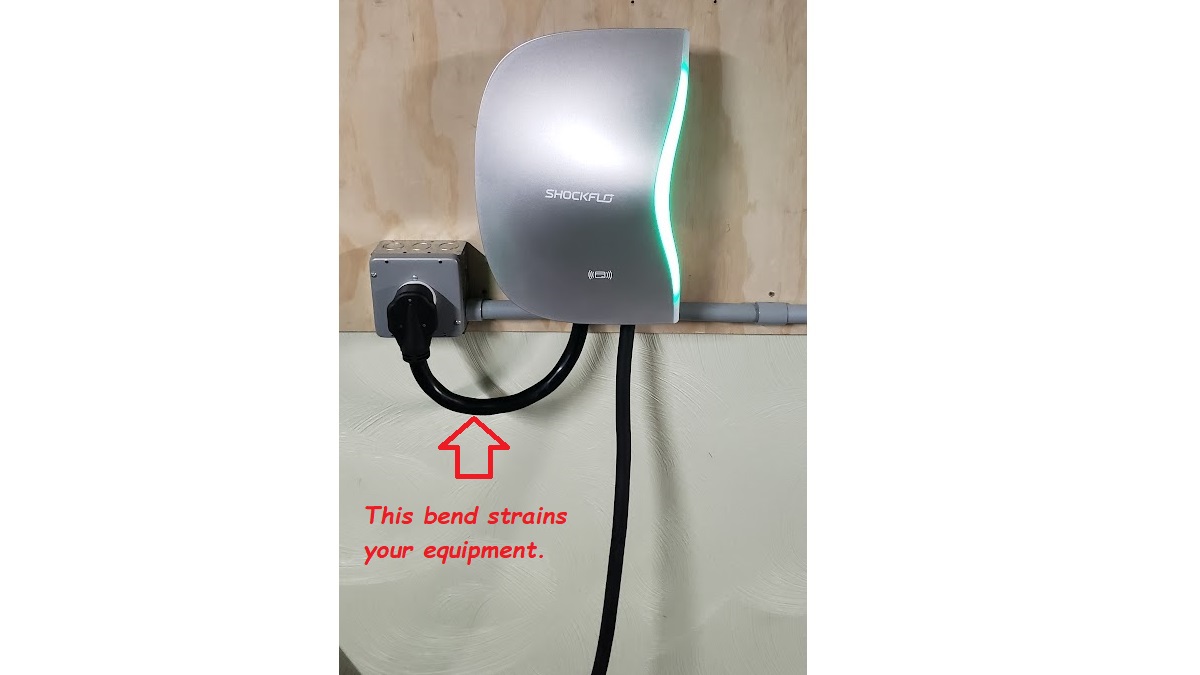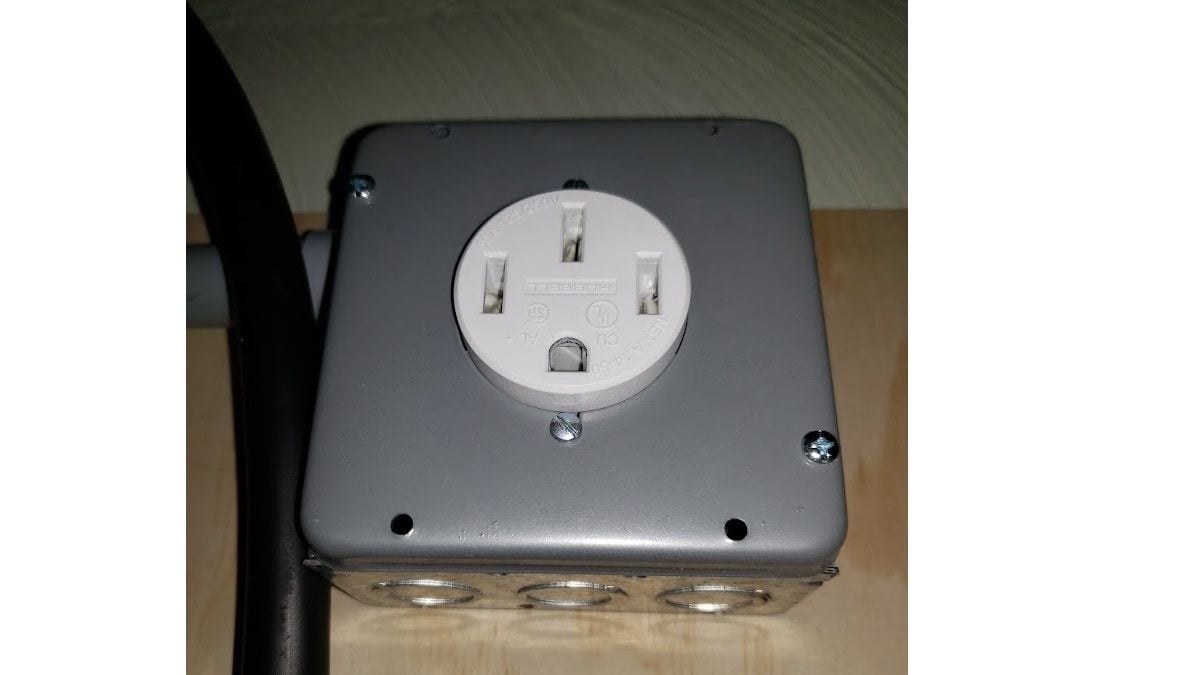Congratulations! You’ve decided to jump into the new year with an electric vehicle charger of your own. This is a wise decision. Depending on public charging is a hassle at best, and a bad idea for those who own an electric vehicle. You are likely getting a lot of advice about how to have the charger installed. Let us give you two key tips. First, if at all possible, have your electrician hard-wire the unit. Second, if you are unable to do so for some reason, have the electrician install the NEMA 14-50 receptacle “upside down.”
Before we begin, let's agree to call the electric vehicle service equipment, EVSE, a charger. that's what EV makers, EV designers, and the folks who build chargers call them.
Here are a pair of stories you may also find very helpful before you begin planning your new EV charger installation.
Tips From a Veteran - What To Know Before You Install A Home EV Charger
Avoid the Single Most Common EV Charger Installation Mistake
Why You Should Hardwire Your New EV Charger
Electric vehicle service equipment like the charger you are installing carries more current for longer durations than any other single appliance in your home. Nothing in your house draws up to 48 amps for hours at a time without interruption. This kind of power puts a lot of stress on the circuit, circuit breaker, and panel. Heat is generated in the normal operation of such use. Over time, the cycles of heating and cooling can loosen connections and cause heat damage to components. One of the components you can easily eliminate is the plug and socket connecting your charger to the power supply. Rather than a plug, your electrician can wire the charger (EVSE) directly to the circuit. This is a more robust way to make the connection, and it eliminates the NEMA 14-50 socket entirely. If you can do the install this way, order your charger “ready to be hard-wired.” Your wall-mounted charger supplier will have the option.
 Why You Should Install Your NEMA 14-50 Receptacle Upside Down
Why You Should Install Your NEMA 14-50 Receptacle Upside Down
If there is a reason why you plan to plug in your charger, we suggest you re-think it, but we understand. In fact, our own testing setup uses a NEMA 14-50 socket because we test different units frequently and need to be able to change them out without the help of our electrician. Don't do what we do!

The reason it is better to have the ground hole down, based on our own experience, is that when the pigtail of the charger comes, it will connect much easier if the receptacle is configured this way. If you mistakenly mount the charger’s receptacle with the ground up, as we did, you will need to make a tight bend in the power cable. These cables are very stiff and making the u-turn is tough on the charger’s connection and also puts strain on the receptacle.
If you already have a NEMA 14-50 receptacle and it is mounted with the round ground plug facing up, your electrician can quickly re-wire it and remount it so the ground is down.
Many electricians mount the receptacle so that the ground faces up because the small writing on the receptacle’s face is written so it can be ready in this orientation. We reached out to a local licensed electrician, who is also the electrical inspector for two Metro Boston towns, and asked him if the code requires the ground to face up. He told us, “There is no code about how the outlet is mounted. The outlet can be flipped around very easily, the two screws that mount the plate to the box can be removed and the plate can be rotated so the outlet is facing the other way.”
So, once again, welcome to the club of EV owners who have a home EV charger. Be sure to read our two links at the start of the story for some additional tips on how to make your project go as smoothly as possible.
John Goreham is an experienced New England Motor Press Association member and expert vehicle tester. John completed an engineering program with a focus on electric vehicles, followed by two decades of work in high-tech, biopharma, and the automotive supply chain before becoming a news contributor. In addition to his eleven years of work at Torque News, John has published thousands of articles and reviews at American news outlets. He is known for offering unfiltered opinions on vehicle topics. You can follow John on Twitter, and connect with him at Linkedin.






Comments
I think that this is…
Permalink
I think that this is incorrect and the twisting cord could be eliminated with better plug location. The reason to have the ground plug facing up is for safety. Imagine a partially inserted plug. Then you drop a screwdriver between the plug and outlet. You would want the ground on top in that situation.
Good idea! That way if any…
Permalink
Good idea! That way if any moisture condenses or drips onto the cord; It can flow/drip right down to the receptacle.
First I would never hardwire…
Permalink
First I would never hardwire my EVSE into the wall....true the cord gets lots of use, but usually not unplugging/plugging. I have had to many cords go bad over the years (10 years) to want it hardwired.
Upside down?....I always mount my grounds on the bottom and since I have installed several outlets it always seemed obvious to me to mount it ground down. My current house has a dryer outlet in the garage and I had to flip it so it wasn't so annoying (30 amp outlet) to connect to.
Certainly a good idea in…
Permalink
Certainly a good idea in some cases, but if this is worth writing an article about, perhaps you could suggest that many people would be fine installing 20A NEMA 5-20 sockets, which use cables, sockets, and gang boxes that are very similar to standard 5-15 sockets and are thus cheaper and easy to DIY install. The chargers (maxed at 16A) are also cheaper. The 3.84 kW charging rate is probably good enough for 95% of owners that are able to charge every night. 12 hours of charging is 46kWh, good for 140 miles or so. More range than a typical gas vehicle will get if it's filled up once a week.